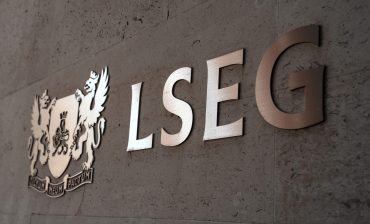
- Earnings Growth
- FTSE 100
- Global Markets
UK Stocks Surge as FTSE 100 Nears Historic 10,000 Milestone
5 minute read

FTSE 100 rallies toward 10,000 as UK equities outpace Wall Street, earnings accelerate, and investment trusts trade at steep discounts.
Key Takeaways
- Decade-long reversal: FTSE All-Share delivers 20% dollar return since January 2025, outpacing S&P 500’s 18% for first time in ten years, yet £32 billion fled UK equity funds over past 12 months
- Earnings acceleration: JPMorgan forecasts 10% FTSE 100 earnings growth in 2025, rising to 15% in 2026, positioning index to breach historic 10,000 level by year-end 2026
- Valuation opportunity: Investment trusts trade at average 12%+ discounts to net asset value while mid-cap stocks show compelling value versus US equivalents amid persistent investor skepticism
Introduction
British equities are staging their most dramatic reversal in a generation, yet hardly anyone is paying attention. The FTSE 100’s recent ascent to an all-time high of 9,494 and the broader All-Share index’s 20% dollar-denominated surge since January have shattered a decade of underperformance against US markets—achievements met not with enthusiasm but with £32 billion in fund outflows and a collective shrug from domestic savers.
This disconnect between performance and perception creates one of the most compelling contrarian investment cases in developed markets. As Wall Street analysts project the blue-chip index breaching 10,000 by 2026 on accelerating earnings momentum, UK investors remain conspicuously absent from their home market, two-thirds parking savings in cash accounts even as inflation erodes real returns.
The psychology driving this exodus reveals scars from years of lagging global peers, but the fundamentals suggest Britain’s investment drought may be ending precisely when skepticism peaks.
Key Developments
The FTSE 100’s march to record territory reflects more than momentum—it signals genuine earnings recovery across sectors that spent years in valuation purgatory. The index’s breakthrough past 9,494 arrives alongside broadening corporate profit margins and renewed confidence in British multinationals’ ability to navigate economic crosscurrents that paralyzed growth through much of the 2020s.
Yet market achievement collides with behavioral inertia. Two-thirds of Individual Savings Account holders maintain cash positions despite diminishing interest rate advantages, while a similar proportion view equity investment as unacceptably risky—attitudes forged during the FTSE’s wilderness years when UK stocks lagged the MSCI All Countries World index by 12% annually. This conservatism persists even as the performance gap not only closes but reverses. The shift marks a profound break from historical patterns.
British investors maintained robust domestic equity exposure through the 1980s and 1990s, but the 2000s witnessed decisive capital flight toward overseas markets as home bias evaporated. That structural repositioning—rational during the UK’s underperformance cycle—now risks becoming yesterday’s trade as relative valuations and earnings trajectories invert.
Currency dynamics amplify the transformation. Sterling’s appreciation converted the All-Share’s respectable 15% local-currency return into a 20% dollar gain, creating performance separation from US markets that few anticipated. This currency tailwind, combined with improving corporate fundamentals, positions UK equities for sustained outperformance if earnings projections materialize.
Market Impact
The £32 billion exodus from UK equity funds over the past year exposes a dangerous lag between market reality and investor positioning. As British stocks deliver their strongest relative returns in a decade, capital continues flowing in the opposite direction—a classic contrarian setup where price improvement precedes sentiment recovery by months or even years. Investment trusts present particularly acute mispricings. Average discounts exceeding 12% to net asset value reflect pessimism baked into valuations, creating mechanical return potential as discounts normalize alongside improving fundamentals.
These closed-end vehicles, trading at levels that suggest persistent skepticism about manager skill and asset quality, offer asymmetric risk-reward profiles for investors willing to look past consensus negativity. Mid-cap valuations tell a similar story. British mid-sized companies trade at substantial discounts to US equivalents despite comparable or superior growth characteristics, particularly in sectors like healthcare, biotechnology, and pharmaceuticals. These valuation gaps—products of years watching American peers command premium multiples—now appear increasingly difficult to justify as UK earnings momentum builds.
The performance divergence carries profound implications for global asset allocators. For the first time in over a decade, overweighting US equities at the expense of UK exposure produced inferior returns in 2025—a result that challenges the consensus portfolio construction playbook and may force institutional reassessment of geographic tilts that ossified during the UK’s lost decade.
Strategic Insights
Britain’s valuation discount reflects more than cyclical pessimism—it embodies a structural repricing that may be reversing. Government policy shifts under the Modern Industrial Strategy signal commitment to growth sectors that struggled for domestic support. The Invest 2035 program’s £2.8 billion research and development commitment targets artificial intelligence, advanced manufacturing, and life sciences—precisely the high-margin industries where UK companies possess competitive advantages but historically received insufficient capital backing. Regulatory evolution strengthens the case for renewed allocation.
Previous frameworks that equated short-term volatility with long-term risk steered savers toward lower-returning bonds and absolute-return strategies, starving equities of domestic capital even as fundamentals improved. Policy recalibration that acknowledges the distinction between price fluctuation and permanent capital loss could unlock substantial flows from the cash-heavy ISA base. The contrarian opportunity extends beyond simple mean reversion. UK equities offer genuine diversification benefits in portfolios dominated by US technology exposure, with meaningful representation in materials, energy, and financials—sectors underrepresented in American indices.
As growth broadens beyond the Magnificent Seven narrative that dominated recent years, geographic diversification into value-oriented markets gains strategic relevance. Currency provides additional dimensionality. Sterling’s recovery from post-Brexit lows creates a natural hedge for dollar-based investors, while pound appreciation amplifies returns for international capital. This dual benefit—local market gains plus currency tailwinds—historically precedes sustained foreign inflows as performance attracts attention and momentum builds.
Expert Opinions and Data
JPMorgan’s earnings projections provide quantitative support for the bull case. Analysts forecast 10% earnings per share growth for FTSE 100 constituents in 2025, accelerating to 15% in 2026—a cumulative mid-teens expansion that would support index levels approaching or exceeding 10,000. These estimates embed assumptions about margin resilience and revenue growth that recent corporate reporting increasingly validates. Investment trust specialists at MoneyWeek highlight specific opportunities within the discount universe. Scottish Mortgage Investment Trust, despite five-year returns of 86% versus 85% for global indices, shows recovery momentum as its technology-heavy portfolio benefits from renewed growth stock appetite.
AVI Global Trust presents stronger fundamentals with 98% five-year gains while trading at a 6% discount to net asset value—a combination suggesting market inefficiency rather than structural impairment. Industry sentiment, however, remains measured. February’s JP Morgan Cazenove investment conference revealed continued institutional interest in emerging markets over UK exposure, suggesting professional investors have yet to fully embrace the home market opportunity. This hesitation—potentially reflecting career risk concerns about underweighting consensus favorites—may extend the period during which contrarian positioning generates outsize returns.
The data underscores a market in transition. Improving fundamentals collide with entrenched skepticism, creating mispricings that sophisticated investors can exploit. As earnings growth materializes and international flows tentatively return, the UK market appears positioned for a multi-year rerating cycle that rewards early movers while punishing those who wait for confirmation.
Conclusion
British equities present a textbook contrarian opportunity: improving fundamentals, attractive valuations, and widespread skepticism creating conditions for sustained outperformance. The FTSE 100’s path toward 10,000 reflects not speculative excess but accelerating earnings growth meeting depressed valuations—a combination historically associated with durable market advances. Risks remain tangible. Elevated industrial energy costs threaten manufacturing competitiveness, while potential tax increases could dampen corporate investment and household consumption.
Geopolitical uncertainty and global growth concerns provide additional headwinds that could derail the recovery narrative before sentiment fully shifts. Yet the fundamental case strengthens with each quarterly earnings report. As corporate profits accelerate and investment trust discounts persist, the opportunity cost of avoiding UK equities rises.
For investors willing to position ahead of consensus recognition, Britain’s unloved market offers rare combination: value, momentum, and a skeptical crowd still looking the other way. The question is not whether UK stocks deserve attention, but how long performance must outpace before capital follows price.







